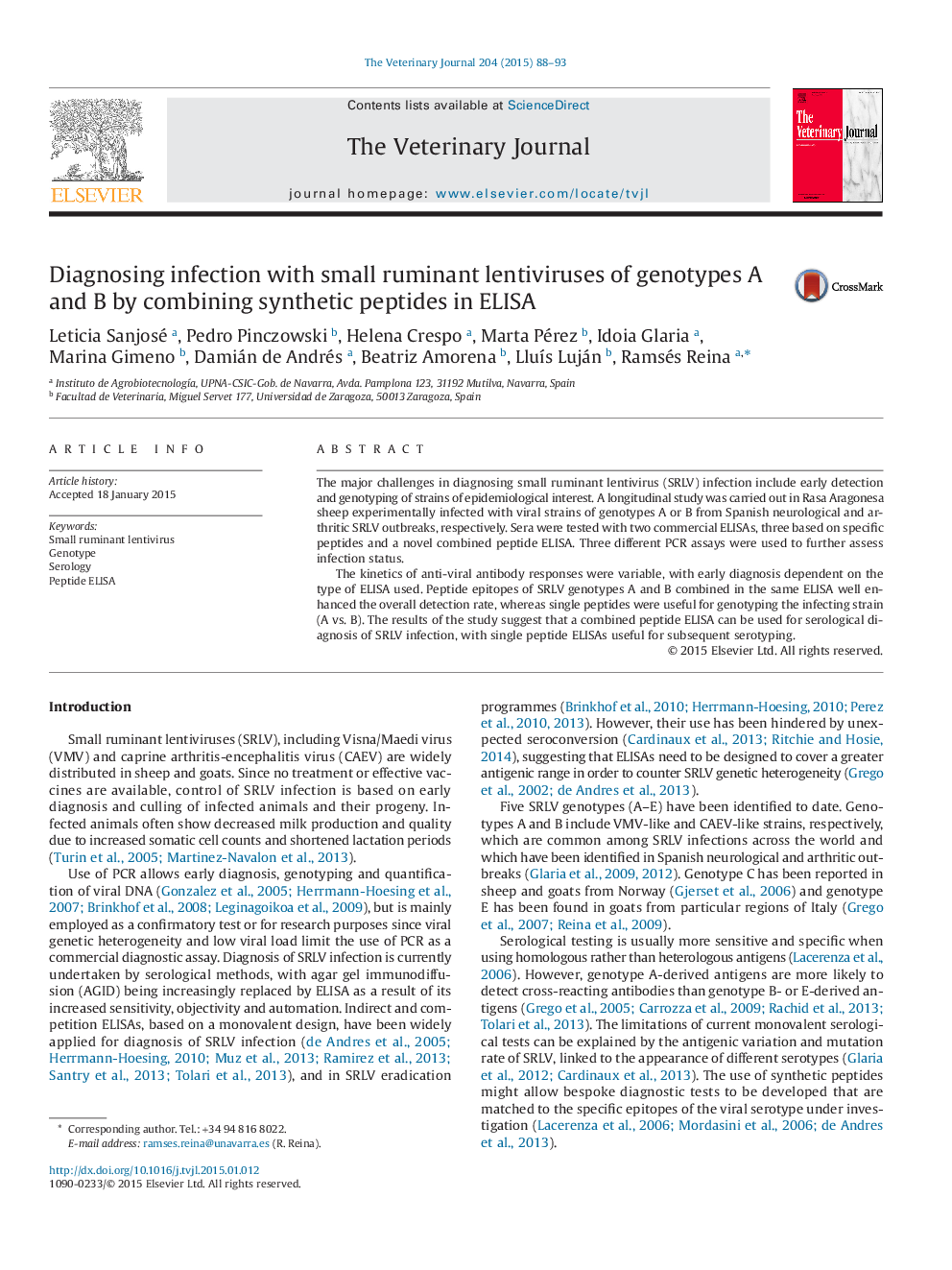| Article ID | Journal | Published Year | Pages | File Type |
|---|---|---|---|---|
| 5797697 | The Veterinary Journal | 2015 | 6 Pages |
â¢A synthetic peptide ELISA was developed for detecting SRLV infection.â¢Sheep were experimentally infected with genotype A and B SRLV.â¢Serological detection was improved, compared with standard methods.â¢Combining epitopes from different genotypes improves ELISA sensitivity.
The major challenges in diagnosing small ruminant lentivirus (SRLV) infection include early detection and genotyping of strains of epidemiological interest. A longitudinal study was carried out in Rasa Aragonesa sheep experimentally infected with viral strains of genotypes A or B from Spanish neurological and arthritic SRLV outbreaks, respectively. Sera were tested with two commercial ELISAs, three based on specific peptides and a novel combined peptide ELISA. Three different PCR assays were used to further assess infection status.The kinetics of anti-viral antibody responses were variable, with early diagnosis dependent on the type of ELISA used. Peptide epitopes of SRLV genotypes A and B combined in the same ELISA well enhanced the overall detection rate, whereas single peptides were useful for genotyping the infecting strain (A vs. B). The results of the study suggest that a combined peptide ELISA can be used for serological diagnosis of SRLV infection, with single peptide ELISAs useful for subsequent serotyping.
